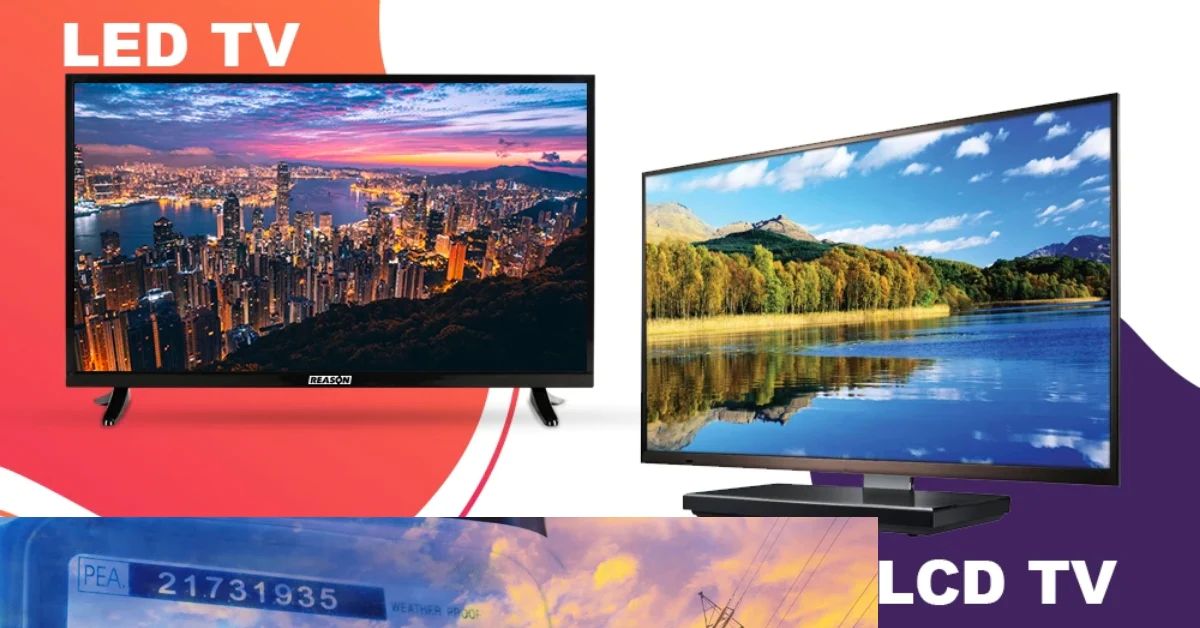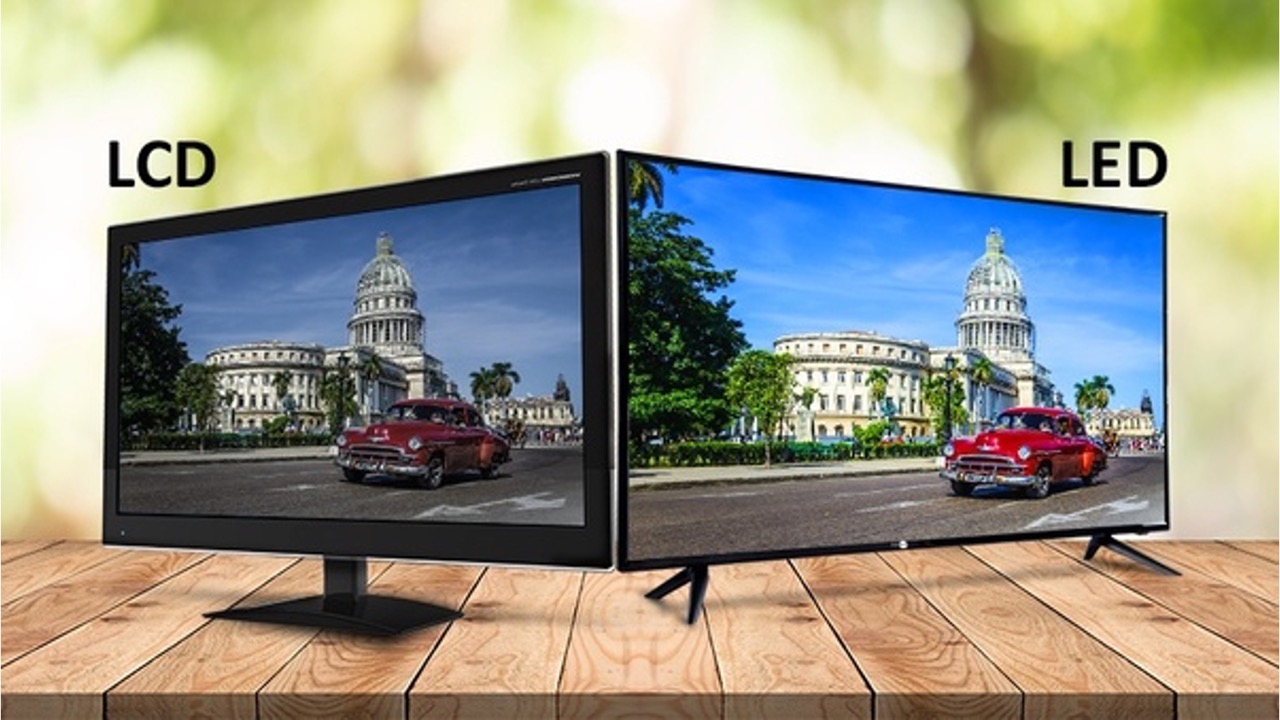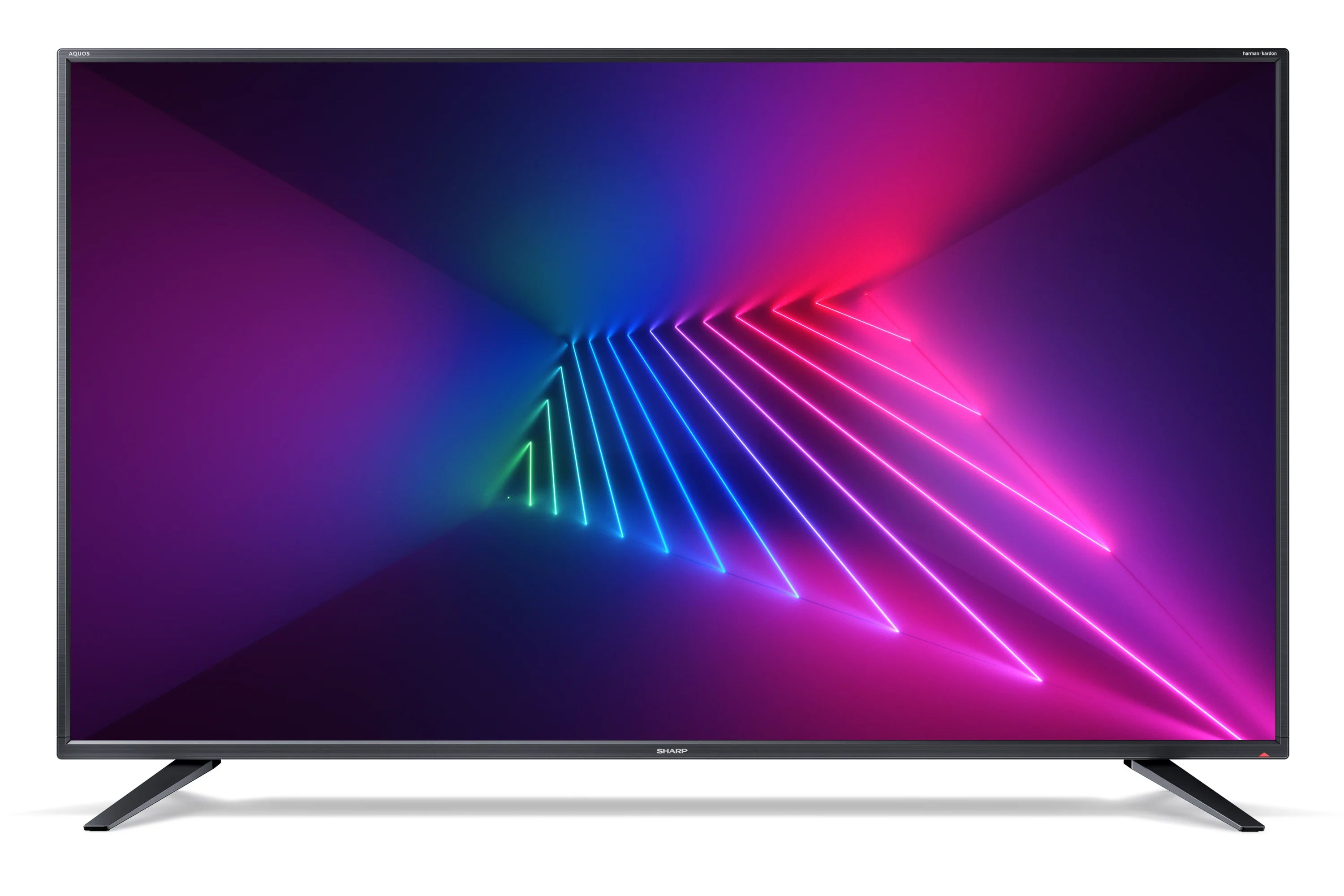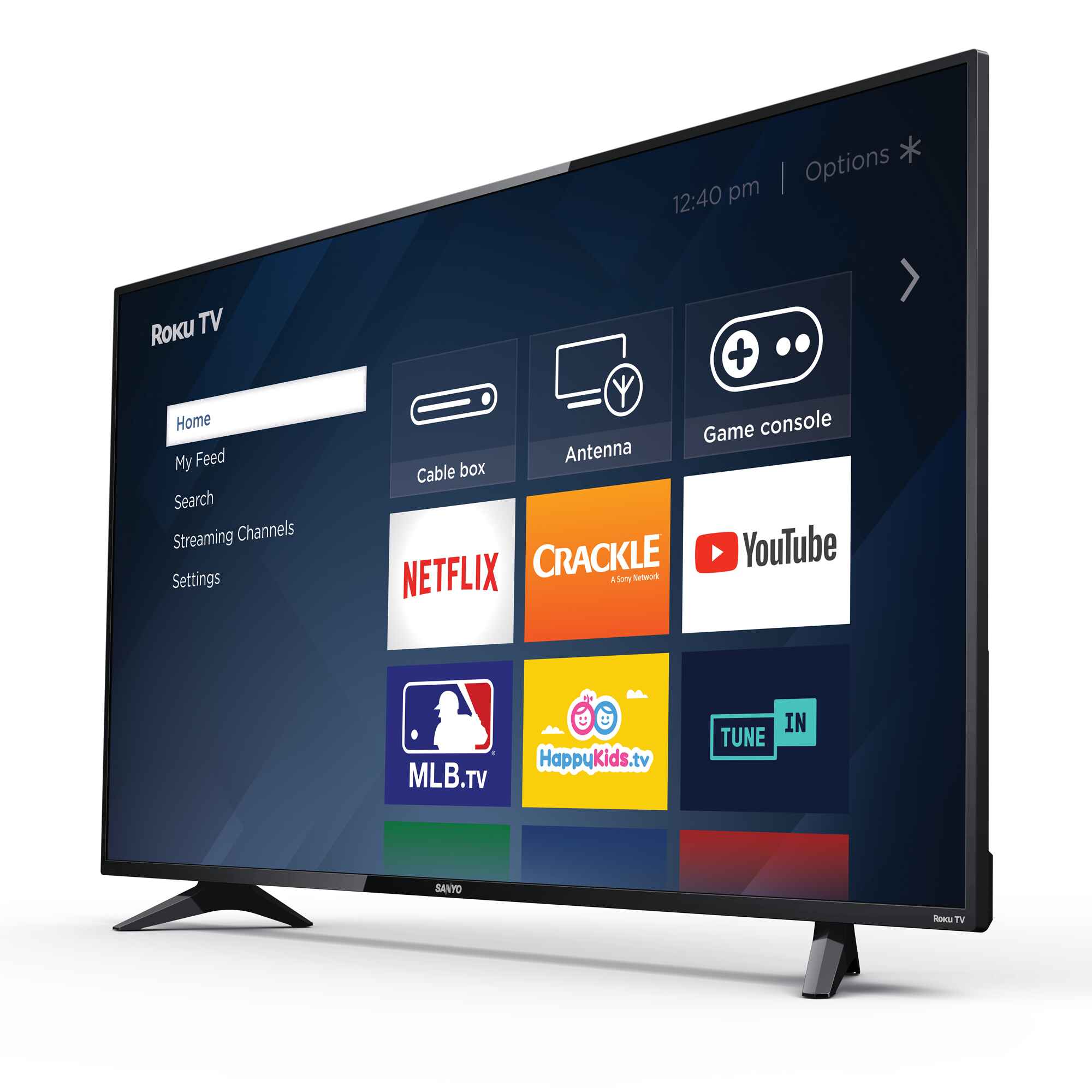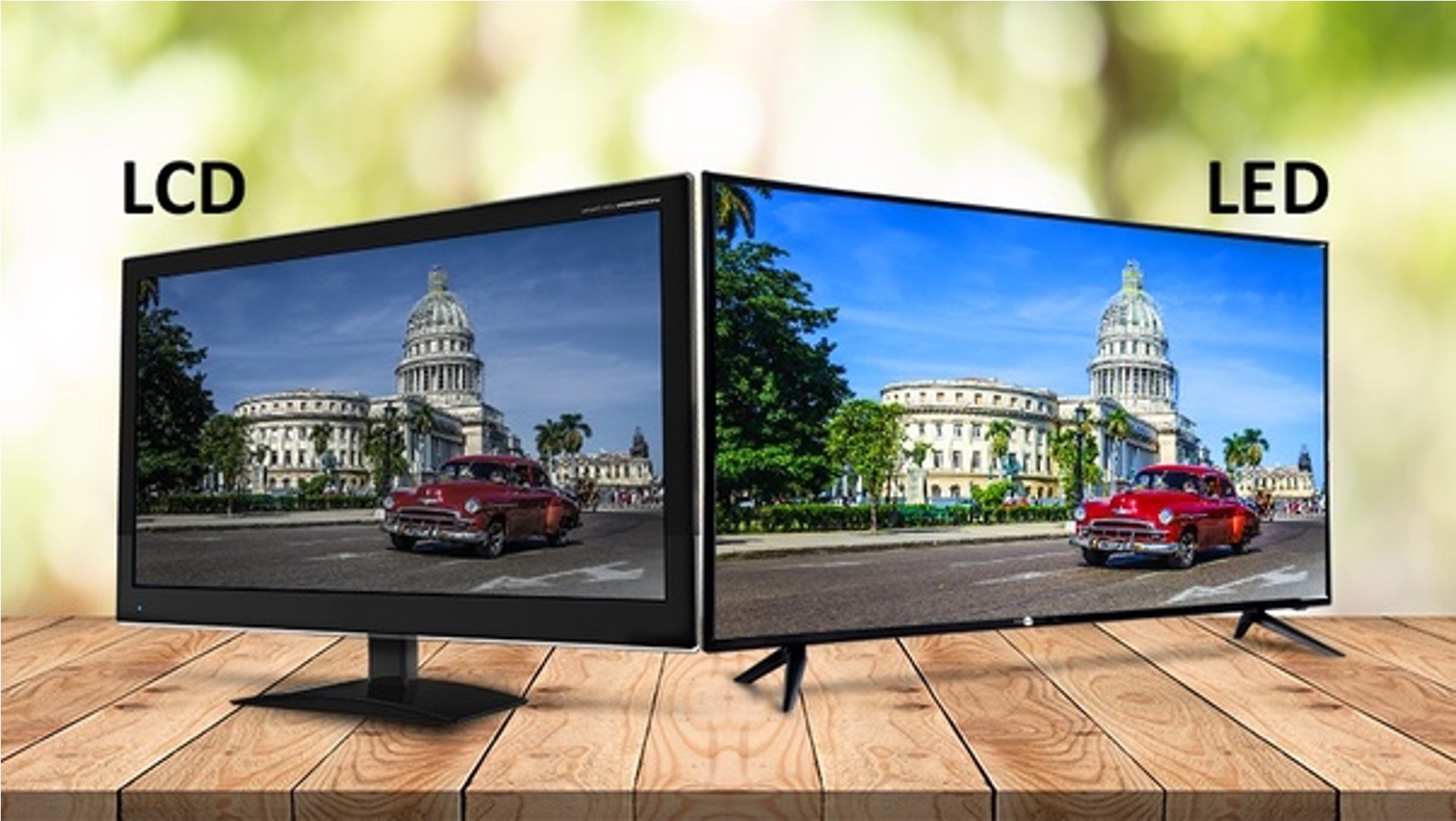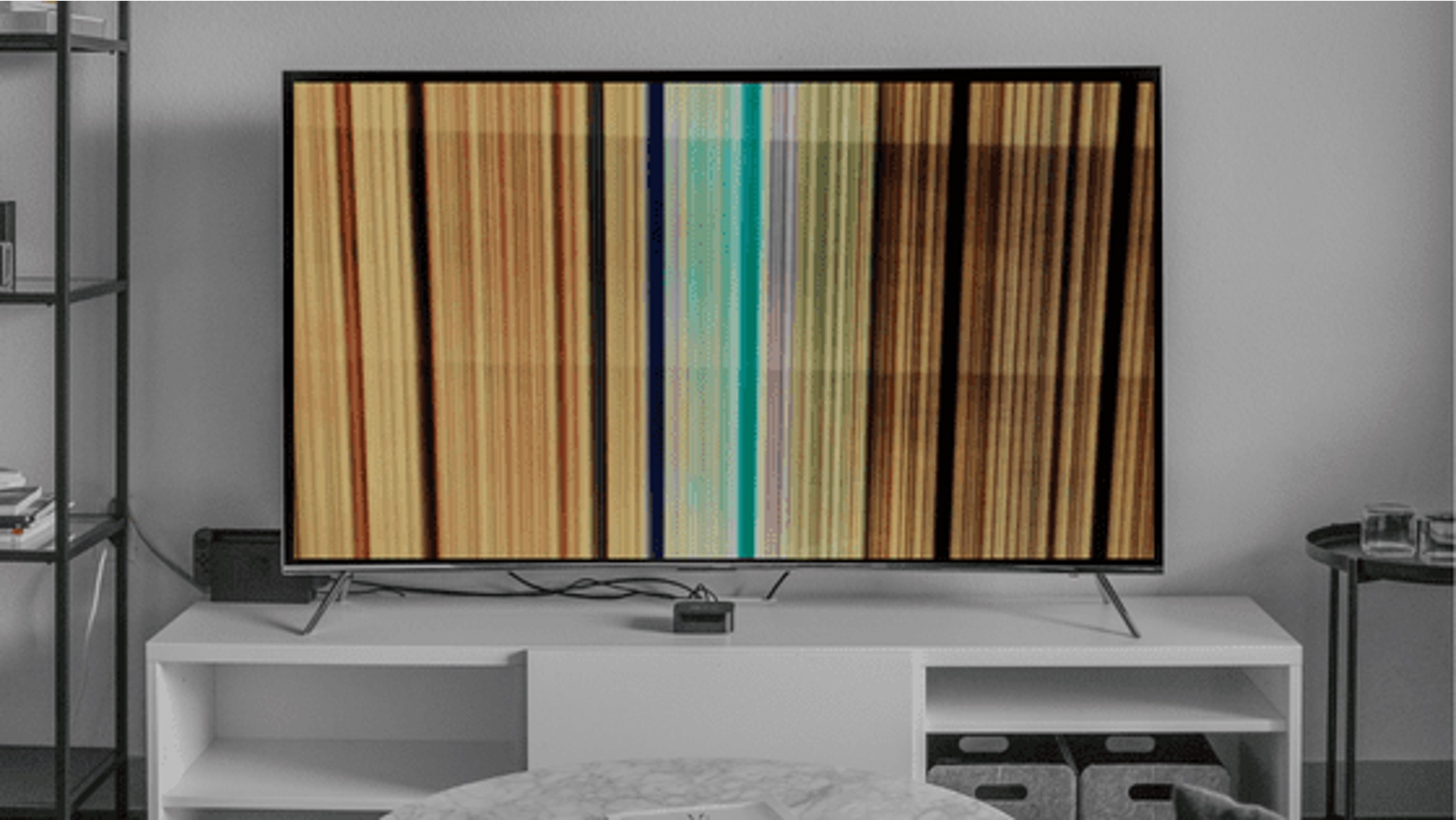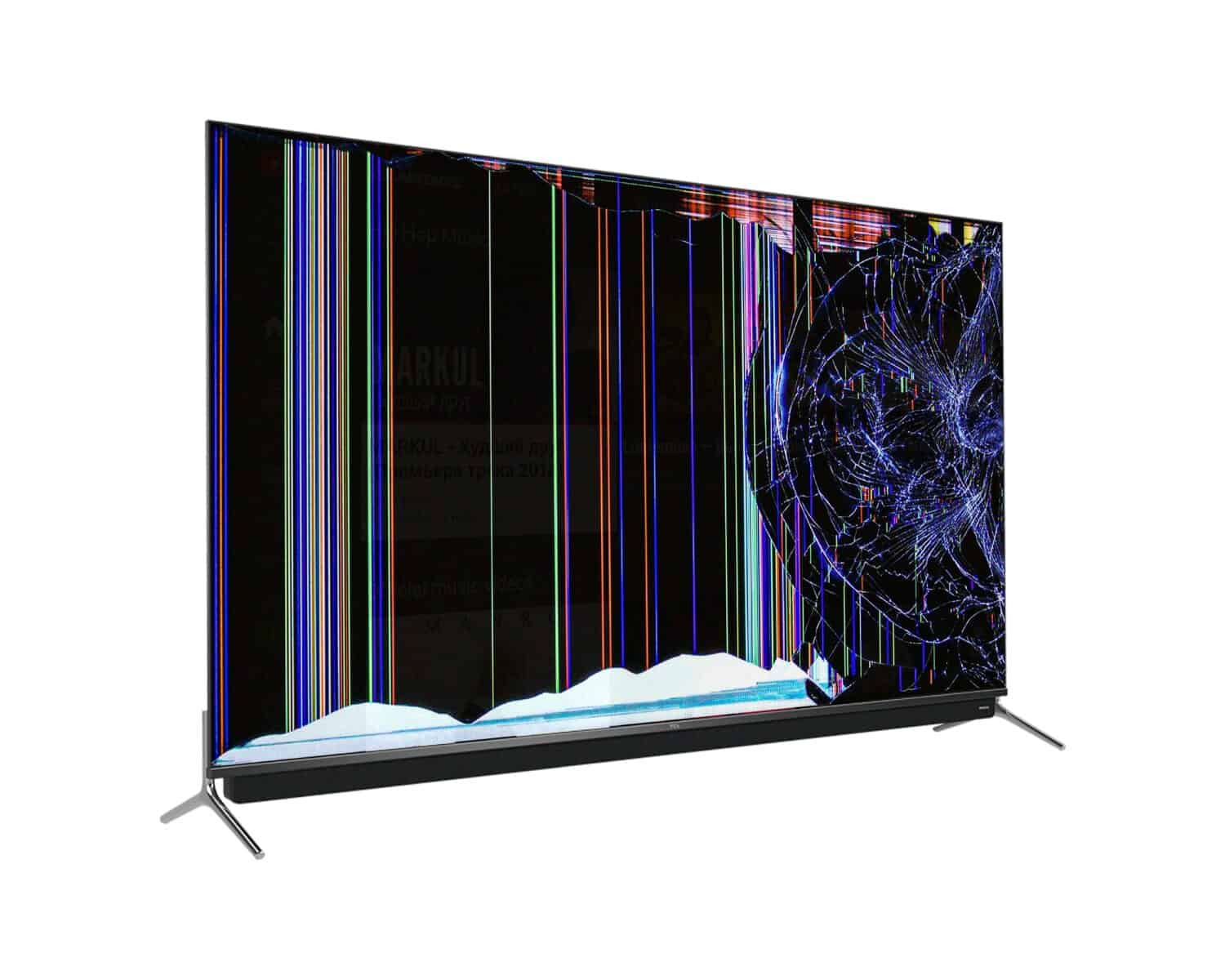Introduction
Welcome to this in-depth comparison of LCD and LED TVs. In today’s fast-paced world, television technology has greatly evolved, and LCD and LED TVs have emerged as two popular options for consumers. Both types of TVs offer high-quality visuals and immersive viewing experiences, but they also have distinct differences that you need to consider when making a purchasing decision.
As a consumer, it’s important to understand the key features and capabilities of LCD and LED TVs to determine which one suits your needs and preferences. In this article, we will dive into the world of LCD and LED technology, exploring the similarities and differences between the two.
LCD, which stands for Liquid Crystal Display, is a display technology that has been used in televisions for many years. On the other hand, LED, which stands for Light-Emitting Diode, is a relatively newer technology that has gained popularity in recent years. Although both LCD and LED TVs use liquid crystals to produce images, the fundamental difference lies in the way they are backlit.
This comprehensive guide will not only examine the differences between LCD and LED TVs but also explore various factors such as energy efficiency, picture quality, contrast ratio, viewing angle, response time, refresh rate, and overall price range. By the end of this article, you will have a clear understanding of the pros and cons of each technology, enabling you to make an informed decision when it comes to selecting the perfect TV for your home.
Definition of LCD TV
An LCD TV, or Liquid Crystal Display television, is a type of television that utilizes a technology called Liquid Crystal Display to produce images. LCD panels are composed of liquid crystals that are sandwiched between two layers of glass. These liquid crystals have the unique property of changing their molecular structure when an electric current passes through them.
When an LCD TV is in operation, the liquid crystals are manipulated using electrical signals to control the amount of light that passes through them. This allows the TV to display different colors and shades by selectively blocking or allowing light to pass through specific pixels. Each pixel on an LCD panel consists of three sub-pixels – red, green, and blue, which together create the full-color spectrum.
Behind the LCD panel, there is a light source called the backlight. The role of the backlight is to illuminate the liquid crystals and enhance the visibility of the displayed images. Traditional LCD TVs use a CCFL (Cold Cathode Fluorescent Lamp) backlight, which emits a fluorescent light evenly across the screen. In recent years, LED backlighting has become the standard in LCD TVs.
In LCD TVs with LED backlighting, tiny Light-Emitting Diodes (LEDs) are used to provide the illumination. LED backlighting offers numerous advantages over the previous CCFL technology. LEDs are more energy-efficient, resulting in lower power consumption. They also allow for thinner and lighter TV designs. Additionally, LED backlighting provides better control over brightness levels, resulting in improved contrast ratio and deeper blacks.
One important thing to note is that LCD TVs require a separate light source to illuminate the liquid crystals. This can sometimes result in less accurate black levels and poorer contrast compared to other display technologies, such as OLED. However, modern LCD TVs have significantly improved their black levels and contrast ratios through advanced backlighting technologies and local dimming capabilities.
Definition of LED TV
An LED TV, which stands for Light-Emitting Diode television, is a type of television that utilizes Light-Emitting Diodes as the backlighting source. LED technology has revolutionized the television industry by offering enhanced picture quality, energy efficiency, and slim designs.
Unlike LCD TVs, which use a CCFL (Cold Cathode Fluorescent Lamp) backlight, LED TVs utilize an array of tiny Light-Emitting Diodes to illuminate the screen. These LEDs are positioned directly behind the display panel and emit light when an electric current is applied to them. The advantage of LED backlighting is that it allows for more precise control over individual pixels, resulting in better contrast, deeper blacks, and more vibrant colors.
There are two types of LED backlighting commonly used in LED TVs: edge-lit and full array. In edge-lit LED TVs, the LEDs are positioned along the edges of the screen, allowing for a thinner and lighter design. The light emitted by the edge-lit LEDs is then diffused across the entire display using a light guide panel. This method is cost-effective, but it may result in slightly uneven lighting and limited control of dimming zones.
In contrast, full array LED TVs have LEDs distributed evenly across the entire back panel, providing more precise control over local dimming. This means that areas of the screen can be dimmed or brightened independently, resulting in improved contrast and better black levels. Full array LED TVs often utilize local dimming zones, where groups of LEDs can be dimmed or turned off entirely for darker areas of the image.
LED TVs offer several advantages over other display technologies. One of the key benefits is their energy efficiency. LED backlighting consumes less power compared to the traditional CCFL backlighting used in LCD TVs, resulting in lower electricity bills and reduced environmental impact.
Furthermore, LED TVs tend to have thinner and lighter designs due to the smaller size of the LED backlighting system. This makes them more versatile when it comes to wall mounting or integrating them into a room’s decor.
Overall, LED TVs have become the preferred choice for many consumers due to their excellent picture quality, energy efficiency, and sleek designs. They have largely replaced CCFL-backlit LCD TVs in the market and continue to evolve with advancements such as HDR (High Dynamic Range) technology, which enhances the color, contrast, and overall visual experience.
Exploring the Technology: Backlighting
Backlighting is a crucial component in both LCD and LED TVs as it provides the illumination necessary for displaying images on the screen. However, the technology and implementation of backlighting differ between these two types of televisions.
In LCD TVs, a backlight is essential to illuminate the liquid crystals and allow for the display of images. Traditionally, LCD TVs used CCFL (Cold Cathode Fluorescent Lamp) backlighting. CCFL backlights consist of fluorescent tubes that emit a uniform white light across the entire LCD panel. While this technology has been effective, it does have limitations in terms of brightness control and energy efficiency.
With the advent of LED technology, LED backlighting has become the standard in LCD TVs. LED backlights use an array of Light-Emitting Diodes placed behind the LCD panel to provide illumination. There are two main types of LED backlighting: edge-lit and full array.
In edge-lit LED TVs, the LEDs are positioned along the edges of the screen, and light is diffused across the display using a light guide panel. This design allows for thinner and lighter TVs, but it may result in some inconsistencies in brightness levels, known as “flashlighting” or “blooming.”
On the other hand, full-array LED TVs have LEDs distributed evenly across the entire back panel. This setup offers better control over local dimming, where specific groups of LEDs can be dimmed or turned off independently to enhance contrast and blacks. Full-array backlighting with local dimming typically delivers superior picture quality compared to edge-lit designs.
Both LCD and LED TVs with backlighting technologies have made advancements to improve black levels and contrast. For example, some LED TVs offer advanced techniques like “local dimming zones,” where different sections of the screen can be dimmed or brightened independently to achieve deeper blacks in specific areas of the image.
It’s important to note that while LED backlighting provides better control over brightness levels and contrast, it does not guarantee perfect black levels like OLED (Organic Light-Emitting Diode) technology. OLED TVs, unlike LCD and LED TVs, do not require backlighting as each pixel emits its own light source. This results in perfect black levels and infinite contrast ratios.
In summary, backlighting plays a significant role in determining the overall picture quality and performance of LCD and LED TVs. LED backlighting has become the preferred choice due to its improved energy efficiency, better brightness control, and the ability to achieve deeper blacks and enhanced contrast through technologies like full-array backlighting and local dimming.
Energy Efficiency
When it comes to energy efficiency, LED TVs have a clear advantage over LCD TVs. The backlighting technology used in LED TVs consumes significantly less power compared to the traditional CCFL (Cold Cathode Fluorescent Lamp) backlighting used in LCD TVs.
The primary reason for the superior energy efficiency of LED TVs is the use of Light-Emitting Diodes as the backlighting source. LED backlighting is more efficient as it converts a higher percentage of electrical energy into visible light. This means that LED TVs can provide brighter images while consuming less power, resulting in lower energy bills and reduced environmental impact.
On the other hand, LCD TVs with CCFL backlighting require more power to produce the same level of brightness due to the nature of fluorescent lighting. CCFL backlighting relies on the emission of ultraviolet light, which is then converted into visible light by the phosphor coating. This process is less efficient and leads to greater power consumption.
LED backlighting’s improved energy efficiency has not only resulted in cost savings but has also allowed for thinner and lighter TV designs. By using less power, LED TVs generate less heat, reducing the need for extensive cooling systems. This contributes to slimmer profiles and sleeker aesthetics.
In recent years, there has been a shift towards energy-efficient displays, driven by stricter regulations and increased consumer awareness. LED TVs meet these energy efficiency criteria and are often Energy Star certified, indicating that they meet the strict power-saving standards set by the Environmental Protection Agency (EPA).
It is important to note that while LED TVs are more energy-efficient overall, specific models and features can still influence power consumption. For example, larger screen sizes, higher refresh rates, and additional features like HDR (High Dynamic Range) can increase power requirements. However, even with such variations, LED TVs still consume less power on average compared to LCD TVs.
By choosing an LED TV, you not only benefit from superior picture quality and performance but also contribute to a greener and more sustainable environment. The energy efficiency of LED backlighting technology is a significant advantage in today’s world, where environmental consciousness and energy conservation are paramount.
Picture Quality
When comparing LCD and LED TVs in terms of picture quality, several factors come into play. These include color reproduction, contrast ratio, brightness levels, viewing angles, and the ability to display fast-moving content smoothly.
Both LCD and LED TVs have made significant advancements in picture quality over the years. However, LED TVs generally offer superior imagery due to their backlighting technology.
The use of LED backlighting allows for better control over brightness levels, resulting in higher peak brightness and more vibrant colors. LEDs can be dimmed or brightened selectively, providing greater contrast and deeper blacks. This leads to a more dynamic and visually immersive experience, especially when viewing content with a wide range of light and dark scenes.
Furthermore, LED TVs often have a wider color gamut compared to older CCFL-backlit LCD TVs. This means they are capable of displaying more shades and nuances in colors, resulting in more accurate and lifelike images. The increased color accuracy and richness of LED TVs make them especially well-suited for content like movies and gaming, where color reproduction is vital.
Another aspect to consider is the viewing angle. LCD TVs, including LED models, have a limitation known as the “viewing angle effect.” When viewed from extreme angles, the brightness and color accuracy of LCD displays can diminish, resulting in a loss of image quality. This can be particularly noticeable when watching with a large group or in a wide room. However, with improvements in LED backlighting technology, the viewing angles of LED TVs have been significantly improved compared to older LCD models.
Additionally, LED TVs generally have better motion handling capabilities, thanks to their faster response times and higher refresh rates. This means that fast-paced action scenes and sports events are displayed with greater clarity and minimal motion blur. Some LED TVs even offer specific features like motion interpolation, which creates additional frames to smooth out motion and enhance image quality.
It is worth mentioning that while LED TVs offer excellent picture quality, there are other display technologies, such as OLED (Organic Light-Emitting Diode), that are known for their exceptional black levels, infinite contrast ratios, and true-to-life colors. However, these high-end OLED TVs come at a considerable cost premium compared to LED TVs.
In summary, LED TVs generally outperform LCD TVs in terms of picture quality. The use of LED backlighting enables them to offer higher brightness, better contrast ratios, wider color gamuts, improved motion handling, and reduced viewing angle limitations. However, it’s important to consider other factors such as screen size, resolution, and specific features offered by different TV models to ensure an optimal viewing experience based on your preferences and requirements.
Contrast Ratio
The contrast ratio is a critical aspect of picture quality, as it determines the difference between the darkest blacks and the brightest whites that a TV can display. A higher contrast ratio generally leads to more vivid and lifelike visuals, enhancing the overall viewing experience.
In terms of contrast ratio, LED TVs typically outperform LCD TVs. LED backlighting technology allows for better control over brightness levels, resulting in higher peak brightness and deeper blacks compared to traditional CCFL (Cold Cathode Fluorescent Lamp) backlighting used in LCD TVs.
LED TVs achieve superior contrast ratios due to the ability to dim or turn off specific areas of the backlight selectively. This local dimming feature, often found in full-array LED TVs or models with advanced backlighting systems, allows for precise control over areas of the screen, resulting in deeper blacks and improved shadow details.
On the other hand, LCD TVs with CCFL backlights have limited control over brightness levels, resulting in relatively higher black levels. This can lead to less prominent differentiation between shades of gray and a reduced overall contrast ratio compared to LED TVs.
It’s important to note that not all LED TVs offer the same level of contrast ratio. The number of local dimming zones, the brightness capabilities, and the implementation of the backlighting system can vary among different models. Higher-end LED TVs with more advanced backlights and full-array local dimming tend to have higher contrast ratios and better black levels.
However, it’s worth mentioning that while LED TVs generally offer improved contrast ratios compared to LCD TVs, they still fall short of the perfect blacks and infinite contrast ratios achieved by OLED (Organic Light-Emitting Diode) technology. OLED TVs do not utilize a backlight as each pixel emits its own light, allowing for precise control over brightness levels and achieving true blacks. This results in unparalleled contrast ratios and stunning visual performance.
Ultimately, if you prioritize a high contrast ratio for richer, more immersive visuals, LED TVs with advanced backlighting systems and local dimming capabilities should be your preferred choice. However, it’s important to consider other factors such as the viewing environment, content preferences, and budget when making a decision, as contrast ratio is just one aspect of overall picture quality.
Viewing Angle
The viewing angle refers to the maximum angle from which a TV display can be viewed without a significant decrease in picture quality. It is an important factor to consider, especially if you often watch TV with a group of people or have a wide seating arrangement.
When it comes to viewing angles, LCD TVs, including LED models, have some limitations. LCD panels work by manipulating light from the backlight through liquid crystals, and the alignment of these crystals affects the amount of light that passes through and the quality of the displayed image. As a result, viewing an LCD TV from extreme angles can lead to reduced brightness, color distortion, and a loss of image quality.
While LCD TVs have improved their viewing angles over the years, thanks to advancements in technology, they still cannot match the wider viewing angles offered by other display technologies such as OLED (Organic Light-Emitting Diode).
LED TVs have made significant strides in widening their viewing angles compared to older LCD models. This is due to improvements in LED backlighting and panel design. However, it’s important to note that the viewing angles of LED TVs can still vary depending on the specific model and the quality of implementation.
Wide-viewing-angle features in LED TVs aim to minimize the loss of image quality and color accuracy when viewed from off-center angles. These improvements allow for a more consistent and enjoyable viewing experience, even when seated at an angle to the screen.
It’s important to test the viewing angles of different LED TVs before making a purchase to ensure that the picture quality remains satisfactory when viewed from various seating positions. Some high-quality LED TVs offer wider viewing angles, ensuring that the picture remains clear and colors accurate, even when viewed from the side.
However, it’s worth noting that even with the advancements in viewing angles, LED TVs cannot match the flawless viewing experience offered by OLED technology. OLED displays emit their light pixel by pixel, resulting in consistent picture quality regardless of the viewing angle. This makes OLED TVs particularly well-suited for large rooms or situations where multiple people are watching from different angles.
In summary, while LCD and LED TVs have made improvements in their viewing angles, it’s important to consider the specific model and technology used. LED TVs generally offer wider viewing angles compared to older LCD models, but they still fall short of the impeccable viewing angles provided by OLED displays. When choosing a TV, it’s crucial to consider your seating arrangement, the number of viewers, and the importance of maintaining picture quality when viewed from off-center angles.
Response Time
Response time is an important factor to consider when evaluating the performance of LCD and LED TVs, especially for fast-paced content such as sports, action movies, and video games. It refers to the speed at which a pixel can change from one color to another, typically measured in milliseconds (ms).
LCD and LED TVs have significantly improved their response times over the years, resulting in smoother motion and reduced motion blur. The response time of a TV is influenced by factors such as the panel technology, pixel refresh rate, and image processing capabilities.
LED TVs generally offer faster response times compared to older LCD models, as they utilize advanced technologies and faster-switching materials. This improved response time helps reduce motion blur and ensures a more fluid viewing experience, especially during fast-action scenes or when playing fast-paced video games.
It’s important to note that the response time of LED TVs can vary among different models. Faster refresh rates and features such as motion interpolation can help further reduce motion blur and enhance the overall clarity of fast-moving content.
However, it’s worth mentioning that even with advancements in LED technology, some LCD and LED TVs may still exhibit slight motion blur, especially with certain lower-quality panels or slower response times. This can be more noticeable when viewing content with rapid movements or panning shots.
For gamers, low response times are particularly important to ensure minimal lag and smooth gameplay. Many modern LED TVs offer specific gaming modes or features like variable refresh rate (VRR) or enhanced motion handling to provide a more responsive and immersive gaming experience.
When comparing response times, it’s essential to consider the specific specifications and features of each TV model. Faster response times generally result in less motion blur and smoother visuals, but it’s also important to consider other factors like input lag, which can impact the overall gaming experience.
It’s worth mentioning that response times are not a factor to consider when it comes to OLED TVs. Unlike LCD and LED TVs, OLED displays do not suffer from motion blur due to their instant pixel response time.
In summary, LED TVs generally offer faster response times compared to older LCD models, resulting in reduced motion blur and smoother motion during fast-paced content. However, it’s important to consider the specific specifications and features of each TV model to ensure optimal performance, especially for gaming enthusiasts or those seeking the most fluid viewing experience.
Refresh Rate
The refresh rate refers to the number of times a television screen updates its image per second. It is measured in Hertz (Hz), and a higher refresh rate typically results in smoother motion and reduced motion blur, especially during fast-paced content such as sports or action scenes.
Both LCD and LED TVs have made advancements in refresh rates over the years, moving from standard 60Hz to higher rates like 120Hz, 240Hz, and even 480Hz. These higher refresh rates prevent blurring of fast-moving objects, resulting in a more realistic and immersive viewing experience.
LED TVs generally offer a range of refresh rate options, with higher-end models offering faster rates. A higher refresh rate means the television can display a greater number of unique images per second, leading to smoother motion and reduced motion artifacts. This is particularly noticeable when watching sports or playing fast-paced video games.
It’s important to note that while a higher refresh rate can enhance the smoothness of motion, not all content benefits from higher rates. Most broadcast and streaming content is typically filmed and displayed at 24 or 30 frames per second (fps), so a higher refresh rate may not have a significant impact on such content.
Additionally, it’s worth mentioning that some manufacturers use motion interpolation technologies to artificially increase the perceived refresh rate. These technologies create additional frames between actual frames, resulting in a smoother appearance. However, it’s a matter of personal preference, as some viewers may find this “soap opera effect” unnatural. It’s advisable to test and adjust these settings based on personal preference.
For gamers, a higher refresh rate can make a noticeable difference in gameplay. Many LED TVs now offer gaming-specific features such as higher refresh rates, variable refresh rate (VRR) compatibility, and low input lag. These features reduce motion blur, provide smoother gameplay, and minimize the delay between pressing a button and seeing the action on the screen, resulting in a more responsive gaming experience.
However, it’s important to ensure that the content being displayed can actually take advantage of the higher refresh rate. Most sources, such as Blu-ray discs or streaming services, are limited to 24 or 30 fps, so the TV’s ability to interpolate additional frames may be more relevant in these cases.
It’s also worth noting that while a higher refresh rate can enhance motion clarity, it is not a guarantee of overall picture quality or color accuracy. Other factors, such as the panel technology and image processing algorithms, play significant roles in determining the overall visual performance.
In summary, LED TVs generally offer a range of refresh rate options, with higher rates providing smoother motion and reduced motion blur. However, it’s important to consider the specific content being viewed, personal preferences, and other factors like gaming compatibility and input lag when evaluating the importance of the refresh rate in your TV purchase decision.
Price Range
Price is always an important consideration when purchasing a new television, and the price range for LCD and LED TVs can vary depending on factors such as brand, screen size, features, and technology. However, LED TVs generally offer a wider range of options to suit different budgets.
LED TVs have become more affordable and accessible over the years, making them the go-to choice for many consumers. The availability of various screen sizes and brands allows for a more diverse price range, accommodating different budget levels.
Entry-level LED TVs are often available at lower price points and provide excellent value for those looking for a basic television for everyday use. These models typically offer standard HD or Full HD resolutions and may have fewer advanced features but still deliver decent picture quality and reliable performance.
As you move up the price ladder, you will find LED TVs with larger screen sizes, higher resolutions (such as 4K Ultra HD or even 8K), and more advanced features. These high-end LED models often boast better picture quality, enhanced color accuracy, higher refresh rates, superior motion handling, and wider viewing angles.
A key advantage of LED TVs is their ability to offer high-quality picture performance at a wide range of price points. This versatility makes them a popular choice for consumers seeking a balance between budget and performance.
On the other hand, LCD TVs, particularly those with older CCFL backlighting, have become less common in the market and are generally found in smaller screen sizes or older models. Due to technological advancements and the widespread adoption of LED backlighting, the price difference between LCD and LED TVs has become less significant.
It’s worth noting that LED TVs with the latest technologies and features can still have higher price tags, especially when considering large screen sizes, OLED panels, or high-end gaming capabilities. These premium LED models compete with other premium display technologies like OLED or QLED (Quantum dot LED) in terms of price.
When considering the price range, it’s essential to evaluate your specific needs, budget, and desired features. It’s advisable to compare prices among different brands and retailers to find the best deal. Additionally, keep an eye out for sales, promotions, or bundle offers that may provide additional value for your money.
In summary, LED TVs offer a wider range of price options compared to LCD TVs, making them more accessible to consumers with different budgets. From entry-level models to high-end options, LED TVs provide a range of features and performance levels to match individual preferences and price considerations.
Conclusion
When it comes to choosing between LCD and LED TVs, it’s important to consider various factors and weigh the pros and cons of each technology. Both LCD and LED TVs have their own strengths and weaknesses, and understanding these differences will help you make an informed decision based on your preferences and requirements.
LCD TVs have been around for many years and have greatly improved their picture quality and performance. They offer affordability, a wide range of screen sizes, and are suitable for everyday viewing. However, LCD TVs can have limitations concerning contrast ratio, viewing angles, and response times.
LED TVs, on the other hand, have become the more popular choice in recent years. They offer better picture quality, higher contrast ratios, improved energy efficiency, and a wider range of features. LED TVs are available in various price ranges, making them accessible to consumers with different budgets.
LED TVs with their LED backlighting technology provide superior performance, including more vibrant color reproduction, better contrast ratios, faster response times, and wider viewing angles compared to traditional CCFL backlighting used in LCD TVs. They also offer the flexibility of various screen sizes, higher resolutions like 4K Ultra HD, and gaming-specific features for an immersive gaming experience.
While LED TVs generally provide a better viewing experience, it’s important to note that other technologies like OLED offer even deeper blacks, infinite contrast ratios, and wider viewing angles. However, OLED TVs tend to come at a higher price point compared to LED TVs.
Ultimately, the choice between an LCD and LED TV depends on your budget, desired screen size, viewing conditions, and expectations. Consider factors like picture quality, energy efficiency, response time, refresh rate, viewing angles, and price range when making your decision.
Regardless of your choice, both LCD and LED TVs have evolved significantly over the years, offering impressive visuals and immersive experiences. Take the time to research and compare different models, read reviews, and consider your specific needs to find the television that best suits your lifestyle and preferences.
Whether you go for the affordability and versatility of an LCD TV or the improved performance and features of an LED TV, your new television will surely bring entertainment and enjoyment to your home for years to come.







